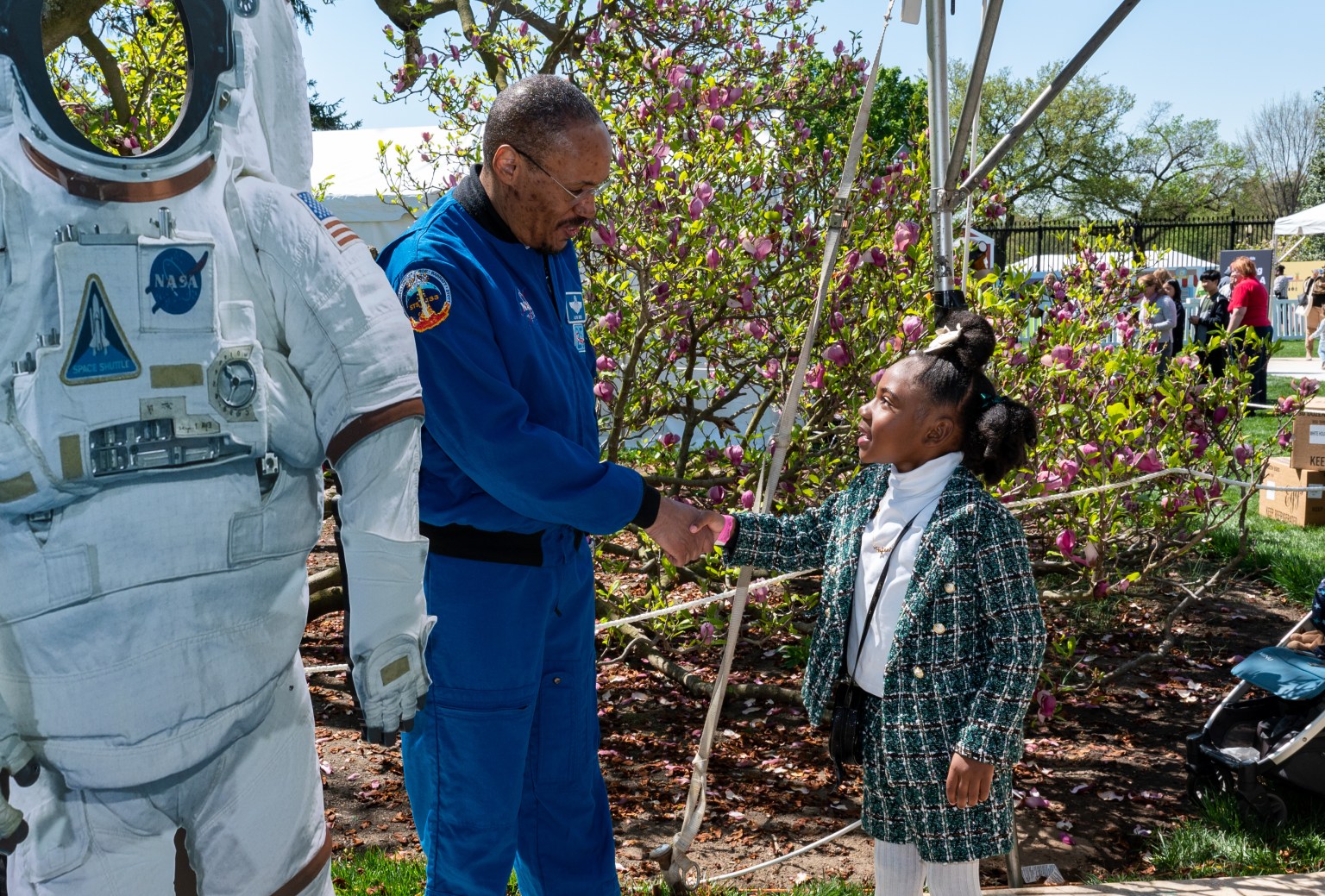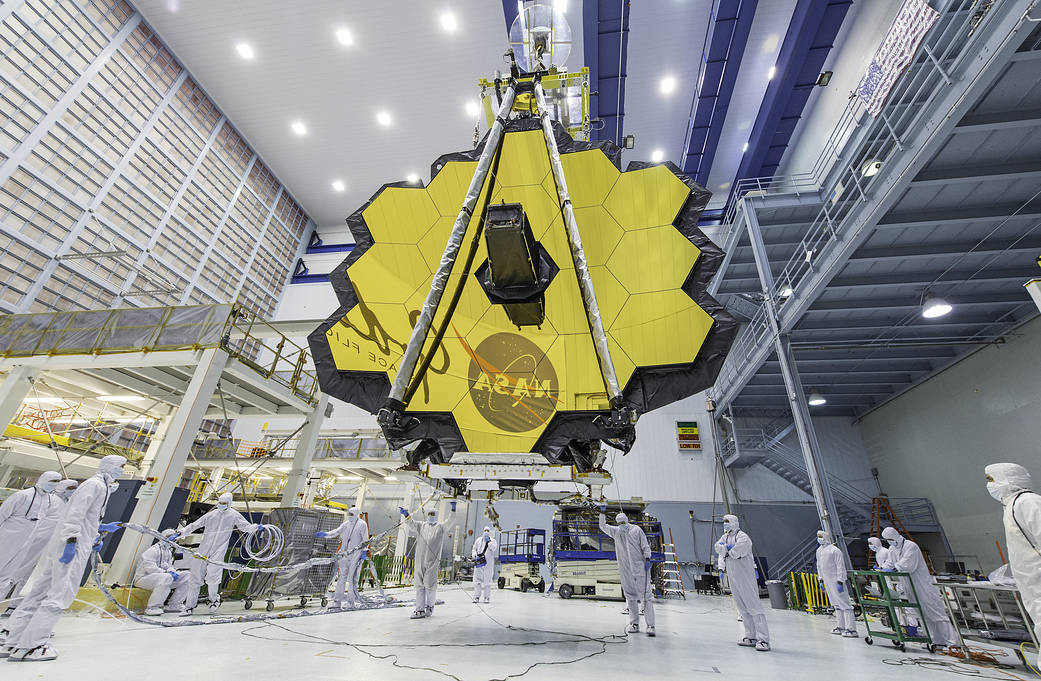NASA First Woman Graphic Novel Exhibit at the SXSW EDU Expo
March 4-6 | 9 a.m. – 4 p.m. CST
NASA explores the unknown, innovates for the future, and inspires the world. Through the First Woman graphic novel series, the space agency is engaging the next generation of explorers as it works in real life to land the first woman and first person of color on the Moon under the Artemis program. Visit us at the SXSW Edu Expo and join First Woman’s Commander Callie Rodriguez and her crew on their mission. The Expo is free and open to the public on Wednesday, March 6.
More Details about NASA First Woman Graphic Novel Exhibit at the SXSW EDU Expo
Space Skills for Careers on Earth
March 5 | 2:30 – 3:30 p.m. CST
Space technology has the potential to help us address some of our biggest challenges on Earth — from climate change to organ transplants. To realize these bold innovations, we need a multidisciplinary workforce with a range of career and technical skills. Yet many young people are not aware of the broad range of space careers, nor how these roles can impact our life on Earth. Learn how NASA, the U.S. Department of Education, and other federal agencies are using career exposure and project-based learning to engage students in space careers.
More Details about Space Skills for Careers on Earth
Satellite Data for Beginners: A NASA Training
March 7 | 11 a.m. – 12:30 p.m. CST
NASA has 30+ satellites pointed at Earth, collecting data useful for everything from disaster response to installing your solar panel at the right angle. This data is free to the public, and you don’t have to be an expert to use it! NASA conducts free trainings to use this data. And for the first time, we’re bringing that directly to SXSW EDU! Join NASA’s Applied Remote Sensing Training for an introduction to accessing, interpreting, and applying NASA data on local and global scales, with real-life case studies and opportunities to bring it into the classroom – no experience required.
More Details about Satellite Data for Beginners: A NASA Training
Opening Session: Explore Space and Poetry with NASA and Poet Laureate Ada Limón
March 8 | 10 – 11 a.m. CST
As we look around this world, we can find an infinite number of things to explore. Every corner we turn can be filled with curiosity and wonder. And the more we look, the more we can find possibilities that will inspire, spark ideas, and expand our understanding of worlds beyond Earth. With a long history of sending inspirational messages out to the depths of space, it’s only fitting that NASA’s Europa Clipper spacecraft launching in October 2024 will continue this tradition by including an engraved poem by US Poet Laureate Ada Limón. Come hear the poem as well as dive into the many ways science and art unite.
More Details about Opening Session: Explore Space and Poetry with NASA and Poet Laureate Ada Limón
NASA: Vision by Design
March 8 | 2:30 – 3:30 p.m. CST
“Our passion for learning…is our tool for survival,” said Carl Sagan, American astronomer and science writer. Learn the many facets of creating beautiful designs, brand experiences, and out-of-this-world broadcasts to capture NASA’s vision for space exploration. Hear from a team of professionals who produce art and content to communicate science and inspire others to join a community that looks through a creative lens. Carefully constructed visual art compositions capture the imagination and draw viewers into the visual experience. Speakers include NASA’s creative team.
More Details about NASA: Vision by Design
Heat, Dust, Smoke, Disease: What NASA Measures in Our Air
March 8 | 2:30 – 3:30 p.m. CST
Heat advisories, air quality alerts and extreme weather warnings are speeding up as temperatures rise. But—take a deep breath—so are the technologies researchers, doctors and healthcare policy experts are using to predict and track disease, weather and air quality particulates. Join NASA specialists and NASA-funded researchers using Earth observations from satellites to inform and care for impacted communities. They’ll dive into projects focused on the air we breathe and how it affects our health, including cooling centers, disease-spreading mosquitoes, and wildfire emissions and pollution.
More Details about Heat, Dust, Smoke, Disease: What NASA Measures in Our Air
From Antarctica to the Stars: NASA's South Pole Research
March 8 | 4-5 p.m. CST
Did you know that NASA performs research from Antarctica in order to deepen our understanding of Earth, other planets, and the universe? Join a gripping discussion with members of NASA’s expedition teams to learn why we must travel to Earth’s most remote continent in order to explore space.
More Details about From Antarctica to the Stars: NASA's South Pole Research
The Greatest Hits of NASA's Webb and Beyond
March 9 | 2:30 – 3:30 p.m. CST
NASA presents a fireside chat with Dr. Mark Clampin, Astrophysics Division Director in the Science Mission Directorate at NASA Headquarters. This chat will be moderated by NASA Public Affairs Officer Laura Betz and will cover the latest from NASA’s James Webb Space Telescope and other missions exploring the cosmos. Hear about Webb’s latest scientific discoveries, what’s next for NASA’s study of the cosmos, and see a new image from the James Webb Space Telescope. Learn more about how some of the latest technologies will help NASA look at worlds beyond ours.
More Details about The Greatest Hits of NASA's Webb and Beyond
A Traveler’s Guide to the 2024 Solar Eclipse
March 9 | 4 – 5 p.m. CST
Heads up! On April 8, 2024, the Moon will block out the Sun in an eclipse seen from Mexico to Maine to the Maritimes. Hear from NASA experts, get maps and pro tips about where and when to see the partial and total solar eclipse as it crosses North America, and how to view it safely. Get resources to join or host your own eclipse party, and find out what science we’ll be doing during this astronomical event. Plus: Tell us what you’d like to see on air during our live streaming eclipse coverage, and your ideas could end up in a NASA show seen by sky-watchers around the globe.
More Details about A Traveler’s Guide to the 2024 Solar Eclipse
How Humanoid Robots Expand Our Potential in Space and On Earth
March 10 | 11:30 a.m. – 12:30 p.m. CDT
Space travel is filled with danger and daring as humanity explores new frontiers. As we reach deeper into space, we need technology capable of amplifying the off-world capabilities of our interstellar explorers. This fireside chat with NASA and Apptronik will dive into their partnership and joint development of humanoid robots designed to work with human astronauts to relieve them of dangerous tasks and expand mission possibilities. Learn about the history of humanoid robots, their role in the space program, and how this technology is fast becoming reality.
More Details about How Humanoid Robots Expand Our Potential in Space and On Earth
How NASA Supports Startups and Individuals to Collaborate on its Mission
March 10 | 4-5 p.m. CDT
NASA’s success is not NASA’s alone—for more than a decade, the agency has benefited from the creativity and ingenuity of startups, private industry, and even individuals to collaborate with the agency. Join our discussion of how NASA is seeking to fuel our missions with the diverse ideas and expertise found in today’s rapidly evolving ecosystem of individuals, startups, academia, and industry. Panelists include leadership from NASA’s Prizes, Challenges, and Crowdsourcing program, who will share the history of NASA collaboration and how the public and private industry can get involved. A past participant will also share how a challenge helped advanced the company’s 3D-printed habitat technology.
More Details about How NASA Supports Startups and Individuals to Collaborate on its Mission
NASA’s Work in Quantum Science
March 11 | 2:30 – 3:30 p.m. CDT
What once was fodder for science fiction is now part of everyday life. The benefits of quantum research are all around us today: Cell phones, computers, medical imaging technology, GPS navigation, solar panels, and more. We’ve only barely scratched the surface of understanding quantum physics. What new discoveries are yet to be revealed? Join us for an outside and inside look at NASA’s current and future quantum efforts. Panelists will share how NASA is pioneering quantum discovery in space, developing new exploration technologies, and paving the way for the future.
More Details about NASA’s Work in Quantum Science
Live from Space: NASA Astronauts and Your Work in Orbit
March 12 | 10 – 11 a.m. CDT
Orbiting 250 miles above your head is a state-of-the-art scientific lab, and it’s got space for everyone. Come find out how you can get involved with the International Space Station to fly a scientific experiment, move your business forward, or find inspiration from the explorers living and working there. (Plus, find out how to spot the station when it flies over your part of the globe!) This session features a live Q and A with two astronauts currently in space. Whether you’re an entrepreneur, a professional researcher, or just plain curious, this session is for you.
More Details about Live from Space: NASA Astronauts and Your Work in Orbit
Ignite Talks: Music and Technology
March 14 | 10 a.m. CDT
Elizabeth Landau, multimedia lead for Astrophysics at NASA Headquarters, will give an “Ignite Talk” about how NASA data from our solar system and beyond can be turned into sounds. These “sonifications” provide a new way to experience the universe and make space imagery accessible to the blind and low-vision community. NASA has recently released new sonifications and partnered with a composer to create sheet music that represents the center of the Milky Way.
More Details about Ignite Talks: Music and Technology

































